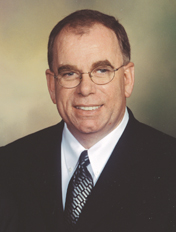
Much has already been said and written about yesterday’s Supreme Court healthcare decision. Most of the attention has been directed at the law’s preserved centerpiece: a requirement to purchase health insurance.
But another largely overlooked matter could have a more profound effect on long-term care providers. In rejecting a take-it-or-leave it Medicaid expansion provision, the court gave states more control over their destinies. And it would appear that long-term care operators may similarly benefit.
Chief Justice John Roberts was the unlikely swing vote on the 5-4 decision. He wrote that states that want to take extra federal Medicaid funding may do so. But he added they cannot be threatened with the loss of all federal funds if they refuse to expand the program as required by Washington.
“States are given no choice in this case,” he pointed out. He added that under the rejected Medicaid provisions, states would have been required to “either accept a basic change in the nature of Medicaid or risk losing all Medicaid funding.” He concluded that states must be given a choice.
And as any provider participating in the Medicaid program can tell you, there is a huge difference between something that is optional and something that is required. That’s not to say states will not opt to participate in an expanded Medicaid program, which changes eligibility so that those under 65 would generally qualify if their income was less than 133% of the federal poverty level. Depending on how much the federal government sweetens the pot to do so, quite a few just may allow more people on their rolls. But it’s not like Uncle Sam has been looking for ways to give operators more cash lately. So let’s see how much those purse strings actually get loosened.
The court’s Medicaid tweak will likely spell a benefit and a challenge for long-term care operators.
On the benefit front, facilities will not be required to share Medicaid funding with additional providers and beneficiaries. By some estimates, up to 17 million more people would have been added to the Medicaid rolls during the next decade. It’s a safe bet that most of this new total would not consist of nursing home residents. That’s another way of saying long-term care would have likely seen its share of Medicaid funding reduced.
On the challenge front, providers will be under more pressure to guide states in the future. As LeadingAge President and CEO Larry Minnix told McKnight’s yesterday, providers will need to lead the way in educating state Medicaid agencies. After all, these are the bureaucrats who will largely determine who gets Medicaid coverage going forward.
We live in a world of unintended consequences. So it’s possible that yesterday’s ruling will ultimately affect the field in ways none of us can now imagine. But for now, it appears that yesterday was a good one for this field.




